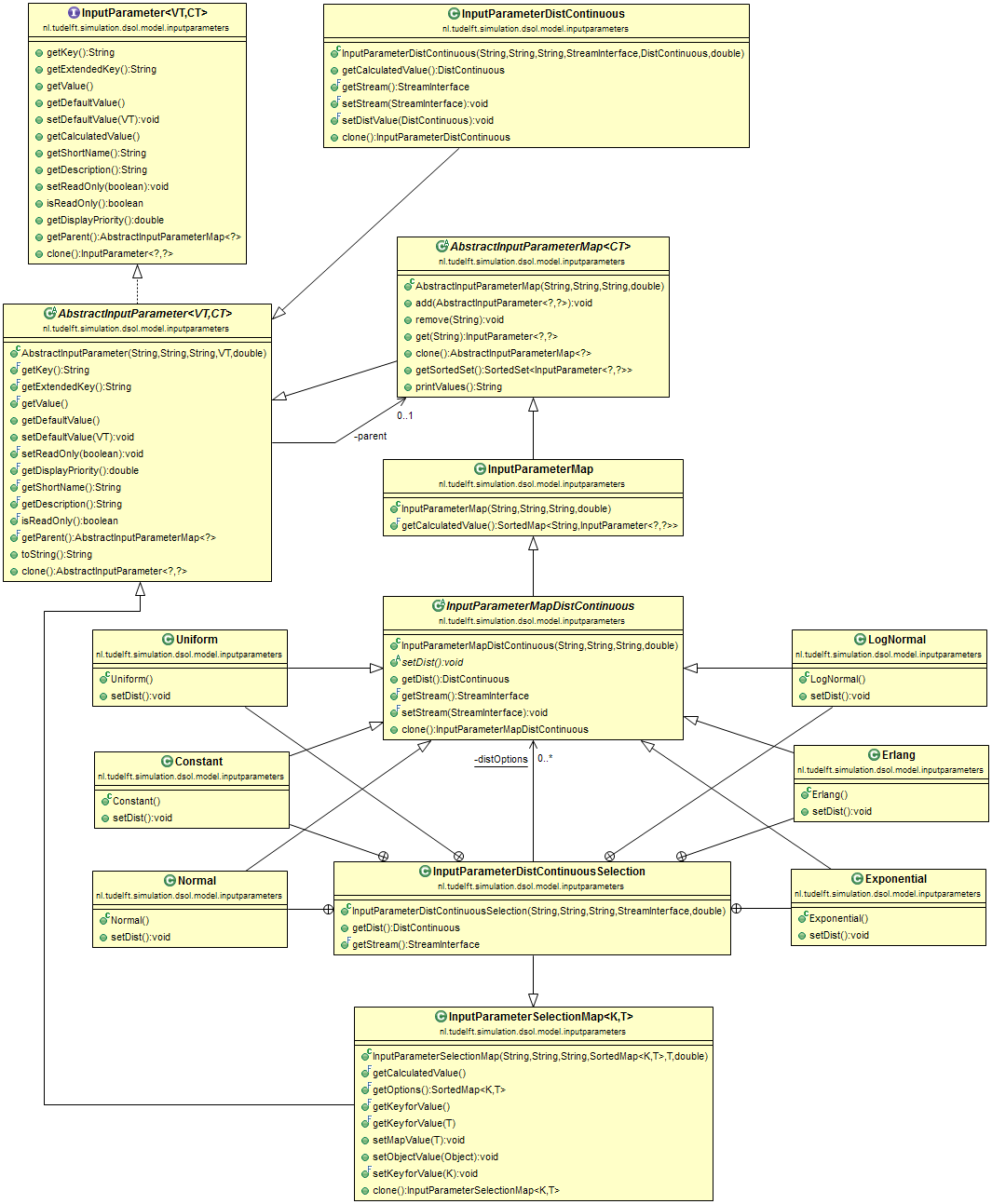Input Parameters for Distributions¶
InputParameterMapDistContinuous and InputParameterDistContinuousSelection¶
The user-based (interactive) entry of distribution functions makes heavy use of the InputParameterSelectionMap and the AbstractInputParameterTypedMap. This is because it is impossible for the user to enter a distribution function and its parameters in a user interface (unless we ask to enter the distribution function as a string and then parse the string). In a 'friendly' environment, the user will have to select a type of distribution function first, followed by the specification of one or more parameters for that distribution function. The InputParameterMapDistContinuous and InputParameterDistContinuousSelection classes have been created for that purpose:

The InputParameterMapDistContinuous is an InputParameterMap analogous to the InputParameterDistContinuous as it contains a random stream, and the distribution can be retrieved. The InputParameterDistContinuousSelection class allows the user to choose one of the InputParameterDistContinuous maps and specify the corresponding parameters for the distribution. The InputParameterDistContinuousSelection is therefore defined as follows:
public class InputParameterDistContinuousSelection
extends InputParameterSelectionMap<String, InputParameterMapDistContinuous>
Internally, it contains a map of options, one for each of the distribution functions:
private static SortedMap<String, InputParameterMapDistContinuous> distOptions;
...
distOptions = new TreeMap<>();
distOptions.put("Beta", new Beta());
distOptions.put("Constant", new Constant());
distOptions.put("Erlang", new Erlang());
distOptions.put("Exponential", new Exponential());
distOptions.put("Gamma", new Gamma());
distOptions.put("LogNormal", new LogNormal());
distOptions.put("Normal", new Normal());
distOptions.put("Pearson5", new Pearson5());
distOptions.put("Pearson6", new Pearson6());
distOptions.put("Triangular", new Triangular());
distOptions.put("Uniform", new Uniform());
distOptions.put("Weibull", new Weibull());
Internally, the Normal distribution has, e.g. the following definition:
public Normal() throws InputParameterException
{
super("Normal", "Normal", "Normal distribution", 1.0);
add(new InputParameterDouble("mu",
"mu", "mu value, mean of the Normal distribution",
0.0, -Double.MAX_VALUE, Double.MAX_VALUE, false, false, "%f", 1.0));
add(new InputParameterDouble("sigma", "sigma",
"sigma value, standard deviation of the Normal distribution", 1.0,
0.0, Double.MAX_VALUE, true, false, "%f", 2.0));
}
So the user can first define the type of distribution, and then --one level deeper in the tree-- specify the parameters for that distribution. Each of the distributions mentioned above has a subclass of InputParameterMapDistContinuous that allows the right parameters to be specified.
The code for the Discrete distributions works analogously.